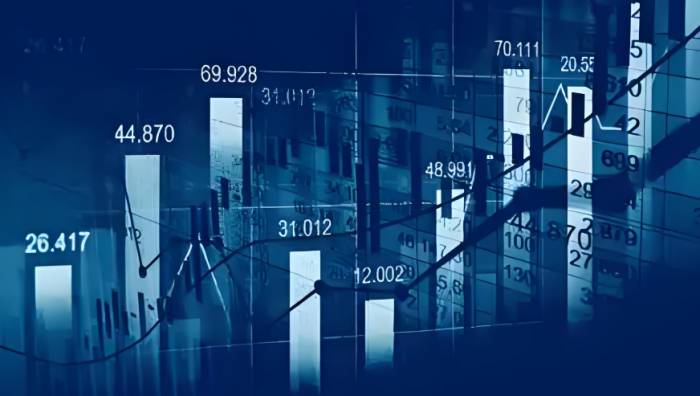Identifying the True Stock Market Experts
The rise of active exchange-traded funds (ETFs) has captivated the interest of investors in recent years, presenting a wave of excitement across the financial landscape. As market dynamics shift, the introduction of these active instruments seems to signal a departure from traditional investing methods towards a more interactive approach. However, beneath the glitzy surface of these ETFs lies a complex narrative, marred by strategies that do not embody the true essence of active management.
One indicator of genuine active management is the number of stocks held within these ETFs. In stark contrast to the strategy of traditional active fund managers who typically focus on a select few top investment ideas derived from extensive research, many of the new wave of ETFs maintain a sizeable portfolio. The influx of active ETFs into the marketplace has been nothing short of remarkable; they have enjoyed a frenzy of growth that defies conventional market expectations. Yet, a deeper dive into the operational strategies of these funds reveals a narrative that is not nearly as straightforward as it appears.
A recent report sheds light on this phenomenon, revealing that out of 1,619 actively managed ETFs, an overwhelming 82% entered the market post-2020. This surge vastly outstrips the 29% of index-tracking ETFs that debuted in the same period. Surprisingly, many of these newly minted ETFs don't fit the traditional mold of what investors typically consider to be "active." A significant portion of the assets—approximately one-fourth of $773 billion in active ETF assets—are managed by firms such as Dimensional Fund Advisors and Avantis Investments. These firms employ a strategy characterized by a slight but pivotal adjustment to fundamentally passive indexing strategies.
Advertisement
Take, for instance, the Dimension U.S. Core Equity 2 ETF, which boasts an impressive $34 billion in assets. Despite being classified as actively managed, its portfolio encompasses a staggering 2,664 stocks. While it does implement factor adjustments, such as tilting towards value, its performance remains closely tied to those of broader, market-cap-weighted indices, reflecting minimal deviations from passive management principles.
Despite the proliferation of active ETFs, the market still displays a glaring absence of funds that are led by managers equipped with dedicated teams of analysts conducting in-depth company-specific research. Unfortunately, tools that screen for such attributes, particularly on platforms like Morningstar, remain elusive, making it challenging for investors to identify traditional stock-picking funds amidst the noise of quantitative strategies. Nevertheless, a few notable funds do stand out within this crowded market, offering a more authentic form of active management.
Several reputable firms, recognized for their exceptional stock-picking prowess, provide ETFs that adhere more closely to traditional active management principles. Firms like T. Rowe Price, Fidelity, Capital Group, Franklin Resources, and JPMorgan have all carved niches for themselves in this domain, delivering funds that harness the expertise of their seasoned analysts. Investors may also look for the number of stocks held within these ETFs as a determining factor of their active nature. In general, traditional active managers gravitate towards portfolios that encompass a concentrated selection of stocks deemed as high-potential investment opportunities, rather than an expansive array resulting from a mechanical screening process.
For instance, the T. Rowe Price Capital Appreciation Equity ETF (TCAF) debuted in June of the previous year and typically holds around 100 stocks. This fund is managed by the accomplished David Giroux, who is also at the helm of the $6.7 billion T. Rowe Price Capital Appreciation fund. The latter has performed exceptionally, surpassing 99% of its peers in the moderate allocation category over the past 15 years. Notably, this fund has since stopped accepting new investors. While TCAF is exclusively invested in stocks, the aforementioned mutual fund includes bonds, showcasing a diverse investment strategy.
Despite Giroux’s ETF exhibiting lower trading frequency compared to its mutual fund counterpart, he firmly asserts that it embodies a highly proactive philosophy. This confidence extends not only to the stocks selected for inclusion but also applies to those deliberately excluded: “Sometimes, the stocks that you do not own impact performance more than the ones you do,” Giroux states, highlighting the significance of capital allocation decisions—spending strategy, dividends, buybacks, and M&A among them. The analysis performed by the fund’s research team delves into forward-looking insights, affording them an edge over quantitative analysts who may lack access to critical non-public information.

Giroux’s investment philosophy emphasizes a balanced approach, securing positions in high-interest tech stocks such as Microsoft and Nvidia, alongside substantial overweights in less glamorous utility stocks, such as Ameren, CenterPoint Energy, NiSource, and Exelon, boasting a 7.4% allocation compared to a mere 2.5% within the S&P 500. Au courant in recognizing the growing demand for electricity necessitated by artificial intelligence systems, Giroux identified these utility companies as pivotal components of future energy supply.
Another example mimicking TCAF's philosophy is the Putnam Focused Large Cap Value ETF (PVAL), which is managed with a similar concentration strategy, holding only 44 stocks. Caroline Edwards, a senior client portfolio manager for Putnam, emphasizes that their “alpha,” or outperformance, is chiefly sourced from a large, devoted analyst team that delivers differentiated insights on selected stocks. Employing over 30 analysts dedicated to stock research, Putnam has reaped the benefits, evident in the fund’s annualized return of 15% over the recent three years, outperforming 99% of its large-cap value fund peers while significantly surpassing its benchmark.
As the dialogue surrounding actively managed ETFs continues to evolve, the distinction between genuinely proactive investing and those funds that merely label themselves as active is crucial. For investors, understanding the complexities of active management can help in making informed decisions regarding the allocation of their capital. The financial landscape is rich in intricacies; discerning between the truly active funds and those merely paying lip service to the ideology remains vital for optimal investment outcomes.
Leave a comment